After five years of amazing times at ENDURO Mag Jim Buchanan has moved onto other ventures. During his time with us, Jim has ridden in some amazing places and had access to the most fantastic mountain bikes and components on the planet. So on planning a final bike build to take with him, he wanted one that ticked all the boxes, the creme of the crop, one that was totally personal to him; this is what he created.
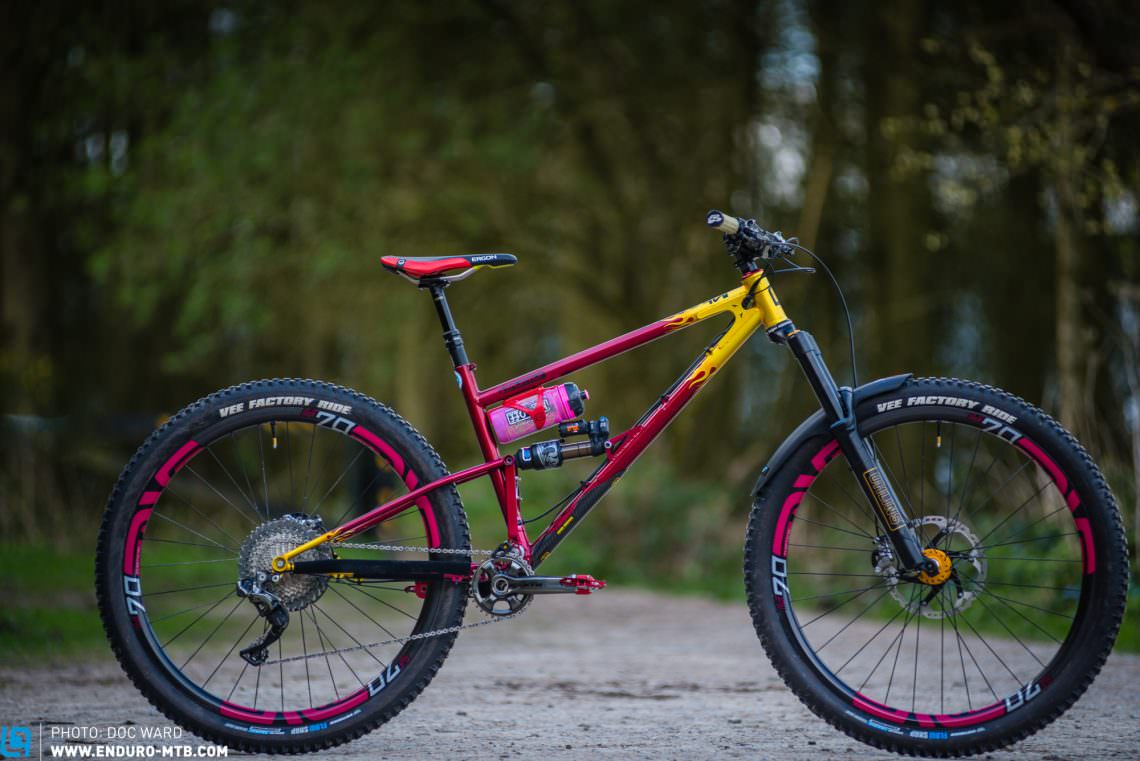
My last bike, the Scott Genius LT Tuned, had certainly transformed into a full-on blinged-out beauty. I wanted a similar high-end build to match the Scott’s looks, but had to outdo it when it came to numbers and angles! Being totally convinced by the extreme long, low and slack bike movement, such as the Nicolai MOJO Geometron and POLE EVOLINK, I am sure Joe, the owner of UK made Starling cycles, was a little surprised when he read my personal geometry for the frame build.



The frame geometry is certainly out there, 510 mm reach, 62° head angle, 120 mm head tube, 340 mm seat tube length, with the Murmur sporting its own 455 mm long rear-end and steep 75° seat tube angle. When given a blank canvas and accessibility to some of mountain biking’s high-end products, then each and every choice of componentry was given great thought and planning; experience and personal preference being top of the agenda. I have grown to love the stiffness of the Enve 70/40 HV rims and tyre stability given by their 35 mm inner rim width; especially with the added bonus of the Enve’s rims giving access to great custom decal opportunities! When talking bling and performance these rims had to be laced with the mega-stiff flat-blade spokes upon gold Chris King hubs; in the three seasons of running these hubs, I have never had to tighten a spoke or replace one hub bearing.

All my testing over the years has given me access to some of the best suspension systems out there too, this was an easy choice here, the Ohlins RFX 36 150 mm Boost forks were fitted up front. Experiments with a coil shock showed the rear linkage requires more pop than a linear coil could deliver so Fox’s very popular new X2 air shock was fitted to tame the 145 mm of rear wheel travel.

More race-proven reliable choices for the Murmur build were made, down to personal comfort and reliability. So the cockpit was made up of Renthal 35 mm carbon bars (780 mm wide) with 40 mm Apex stem and the very grippy long lasting kevlar Renthal grips. After testing many brakes over the years, Shimano XTR was chosen, sporting a 203 mm front and 183 mm rear rotor; the large front rotor chosen to stop this speed machine’s bigger 29” wheels. Dropping off the seat is being handled by the reliable new Rockshox Reverb Stealth 170 mm dropper post, with the left-hand underside remote keeping things neat and tidy.
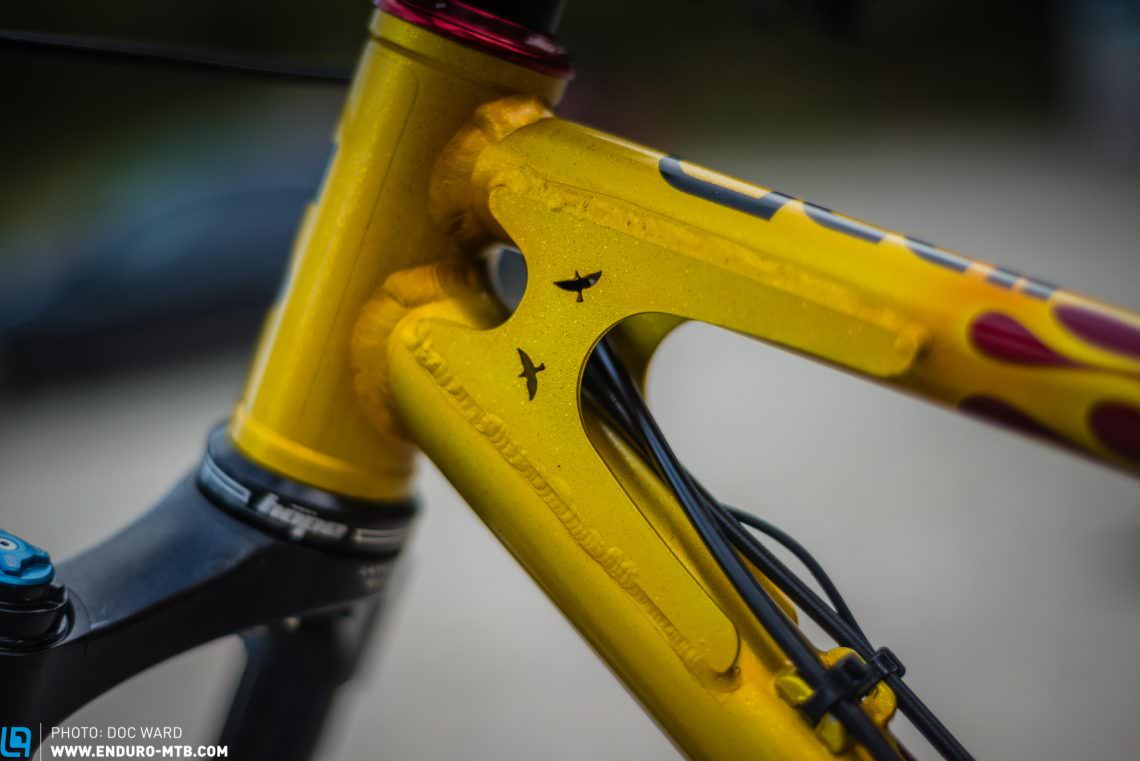
Shimano has been used again when it comes to running gear, not being a fan of carbon cranks (I’ve broken a few!) the strong and light XTR were chosen. Gearing just had to be the Di2, XTR single front ring, XT 11/46 cassette, XTR shifter and the new Bluetooth programmable display. Joe had to add an extra hole in the downtube for the battery wire, but after initial testing, I found the longer 170 mm Reverb couldn’t sit low enough down the seat tube to be usable. So the Di2 battery was inserted into the head tube, with a bit of drilling and filing of the star fangled nut and Chris King head cap to accommodate the battery wire; problem solved!
Chris King came into play again with their use as bottom bracket and headset, yet again for reliability and of course, the gold and red bling to match their hubs! Pedals are HT’s T-1 trail version, being strong, light, good looking, Shimano in feel and very durable. When it comes to grip, Vee Tire adorn the outer edge of the Enves, their prototype Vee Factory Rubber Tackee compound Flow Snaps chosen, these tyres tick all the boxes on weight, dual-compound and tread pattern. To avoid those nasty snake-bites and any possible “big-hit” damage to the Enves, the Huck Norris tire system is fitted inside both front and rear tires. Even valves were considered, with the use of Milkit’s new unblockable versions from Sweden. For aesthetics and comfort, the Ergon ti-railed saddle was chosen to top the Reverb.
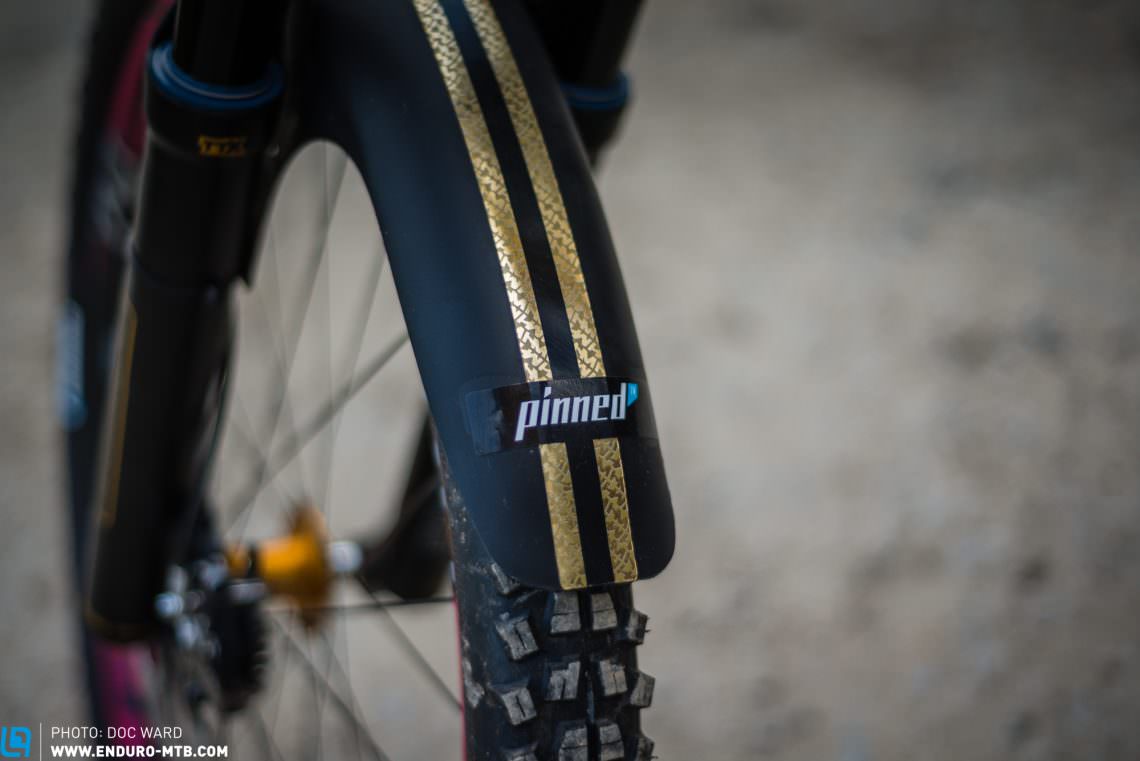
When it comes to customisation there is one ultimate upgrade only afforded by the few and sported by a couple of top “factory riders”, that of the custom paint job. For this, I took on the services of 7 Pot Customs in Bristol. They were given one basic instruction for a theme, this being any similarity to the 70’s biking film “On Any Sunday” this was to be a surprise on collection: there was certainly no let down here! Mudhugger offered custom graphics for their FR mudguard, Enve decals were made to match the frame and finally, this beautiful paint job was protected by local Shropshire firm Invisiframe.
This thing will be looked after like a proud parent protects their child; especially with it’s estimated value of € 10,500 (£ 8,850) but it will still be raced and ridden in anger, as would any other bike. It has taken longer to get acquainted with than many of the other bikes I’ve had on test, but now as things finally click with this wild machine, after a few changes on the riding style it is very impressive indeed!


FEEL OF THE STARLING MURMUR CUSTOM BUILD
Initial feeling sat upon this bike is pretty weird really, you know it’s a very long bike, with it’s 1300+ mm wheelbase, but with the nice steep seat tube angle, you don’t feel like you are a huge distance from bars when sat down. On slow flat riding upon smooth hard terrain the front end can feel vague and kind of wallowy from the 62° head angle, so you won’t feel immediately impressed by the “car park test”
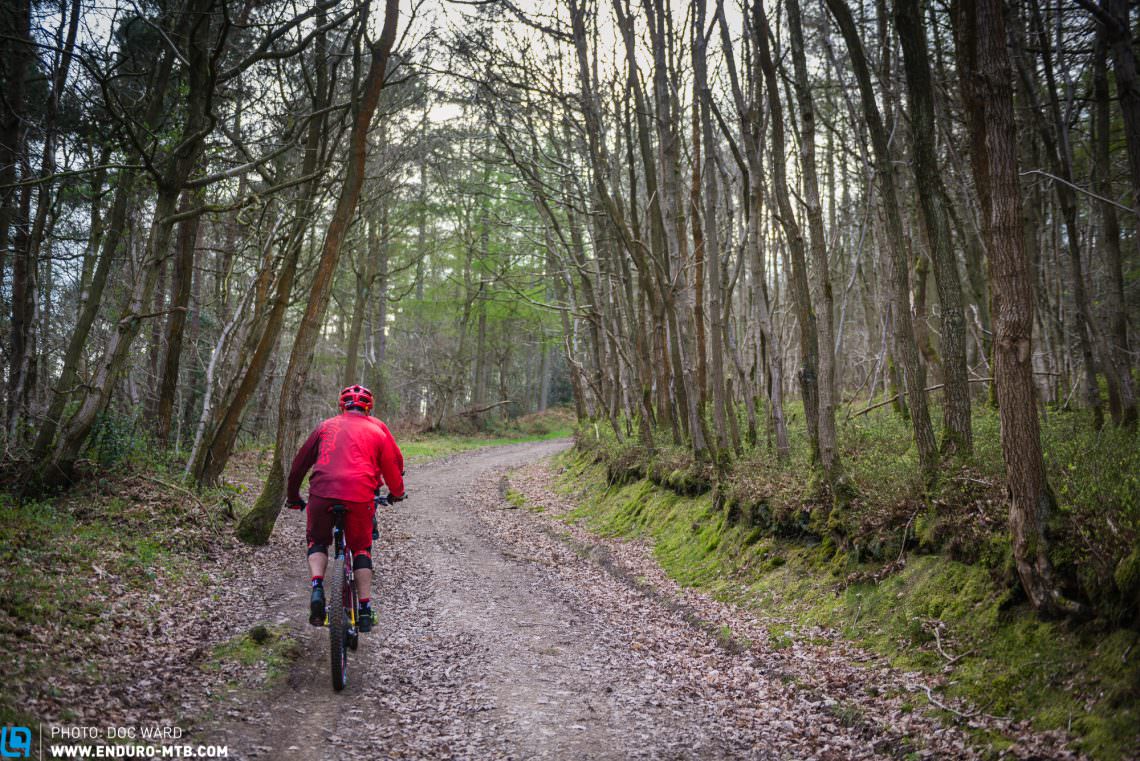
CLIMBING ON THE STARLING MURMUR CUSTOM BUILD
As soon as you point this heavy weight 15.19 kg (33.5 lbs) beast of a bike up a hill, you have it in your head it’s going to be a real pig on the climbs. This is where that “long bike with steep seat tube” magic comes into play, as this custom Murmur’s climbing ability is just unreal. The lengthy wheelbase means it just seems to winch you up the steepest, most technical terrain, never resorting to horrible unwanted wheelies. Obviously, a lighter bike is less weight to wrench up hills all day, but I feel the advantage of length and seat tube angle far outweighs that of a light bike which can lack uphill grip and stability. Occasionally the length can be noticed on the tighter of uphill corners, but point the front wheel around and commit and she will take you through.

DESCENDING ON THE STARLING MURMUR CUSTOM BUILD
This is the technique which has taken longer than usual to muster up. Normally most bikes are kinda similar to get to grips with downhill, just a few tweaks needed to compensate for more or less pop and shorter or longer wheelbase, all of which would be hung off the back at high downhill speed. Not with this bike’s crazy geometry, being an old-school DH rider, hanging off the back comes as second nature, but ditch that old technique and re-learn to ride in the middle of the bike, then all of a sudden things will click, transforming front wheel feel from vague and lacking grip to planted and offering more grip than ever before. Once this technique is mastered you find yourself attacking corners at crazy speeds, as the bike just seems to dare you to try and get the tyres to let go.
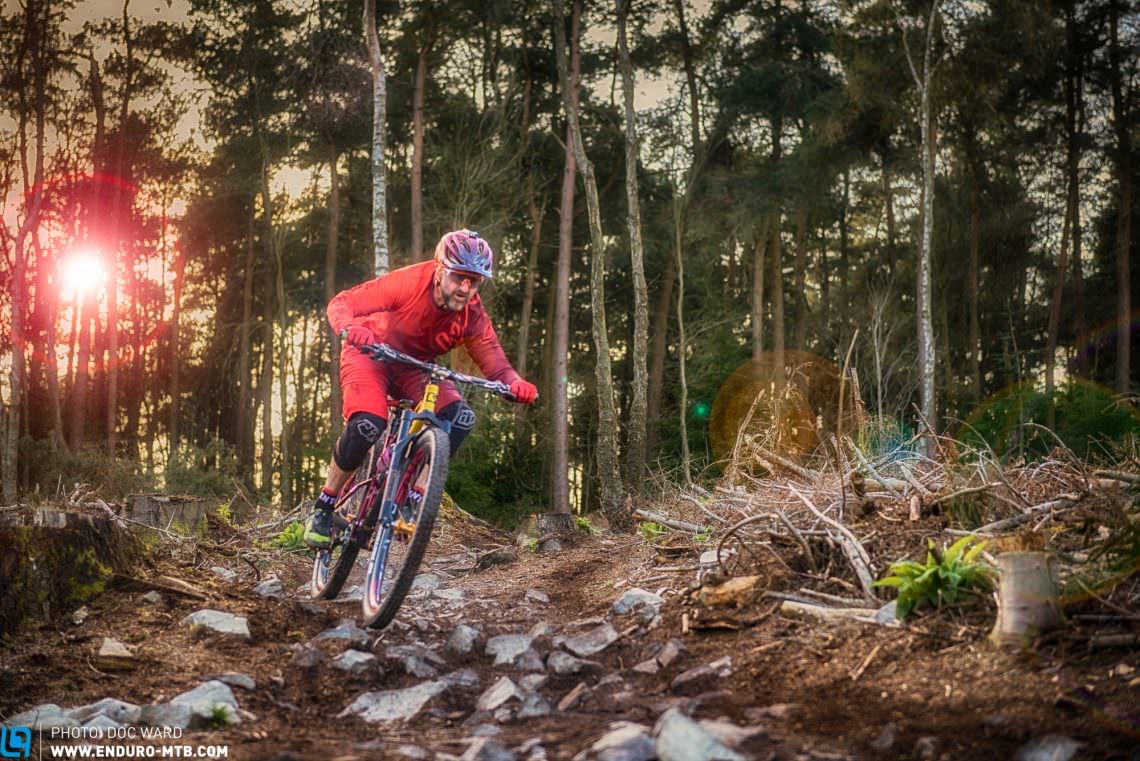
Tight turns are where all long/slack bike critics will thrive on putting you down, but just steer it round these impossible looking corners and the back wheel seems to follow as if on invisible rails. Admittedly the length requires more man-handling when it comes to manualling over stuff and flicking the long rig between tight turns, but when this is mastered it is just so rewarding. Finally when it comes to jumps, the best way to describe it would be to compare it to the confidence offered when hitting lips on a motocross bike, the length making it seem so much safer in the air and a lot less likely to kick or buck the rider over the front or back of the bike.

Of all the bikes I have tested, the Murmur feels the slowest at speed, being very deceptive when riding behind similarly paced riders. This makes you step outside of your speed pay-grade and up the anti with a smug feeling of confidence offered up by the mix of the DH style geometry, 29” wheels and plush suspension adorning the big hitting single-pivot rear end.

SUMMING UP THE STARLING MURMUR CUSTOM BUILD
Yes this wild looking bike did take longer than others to get to grips with and yes it is heavier than most (although a standard Murmur is much closer to an average enduro bike weight) and no, this is not the bike for the average smooth trail centre. But only now after having ridden it for a month am I starting to realise that this bike’s ability far outweighs mine. The Murmur can be ridden all day long up the longest of climbs and with ease down trail centres, bike parks and XC routes. The comfortable speed it offers compared to most bikes is phenomenal but it has one extra attribute which many other “so called” enduro bikes don’t possess; the Murmur would not be too out of sorts if spending the day on the gnarliest of DH tracks!
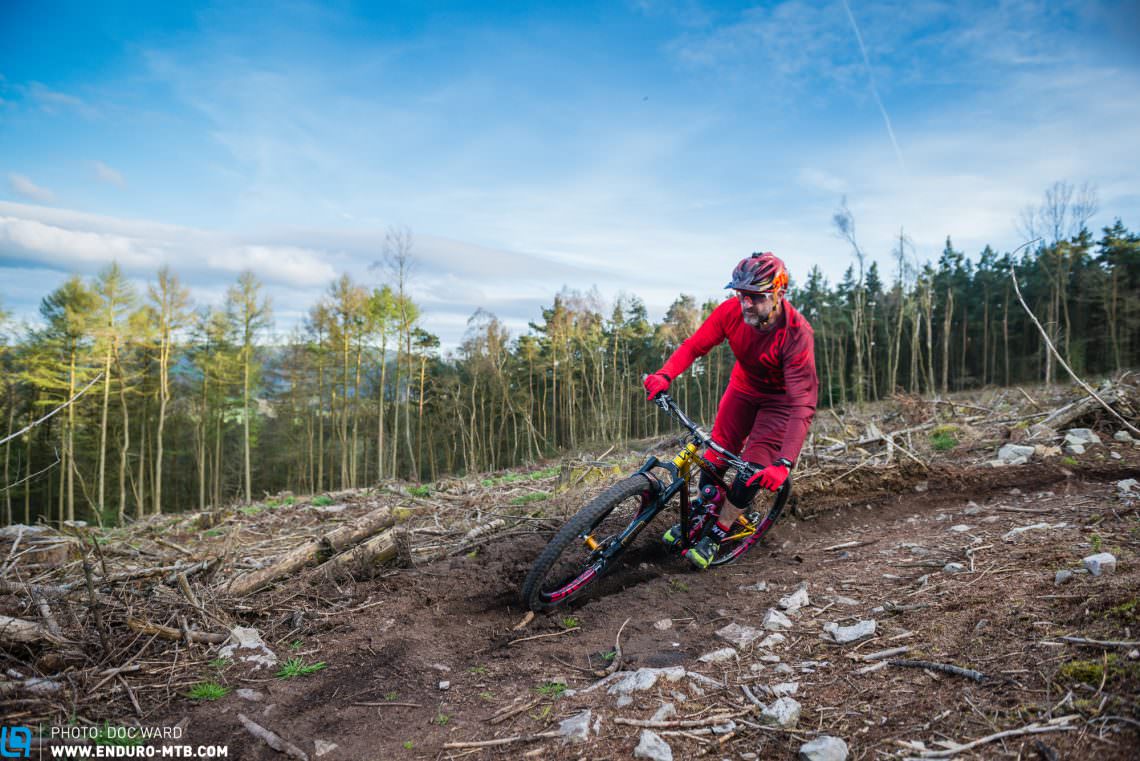
As I move on to different ventures I would like to thank all the readers of ENDURO Magazine for reading my stories, it’s been an incredible journey and so much fun with the best magazine on the planet; keep it Pinned folks!
Did you enjoy this article? If so, we would be stoked if you decide to support us with a monthly contribution. By becoming a supporter of ENDURO, you will help secure a sustainable future for high-quality mountain bike journalism. Click here to learn more.
Words: Photos: Doc Ward








